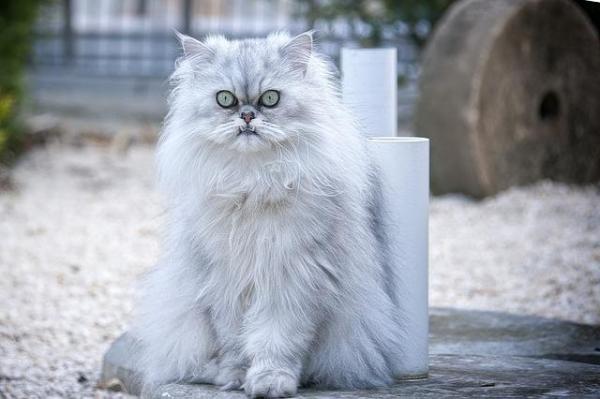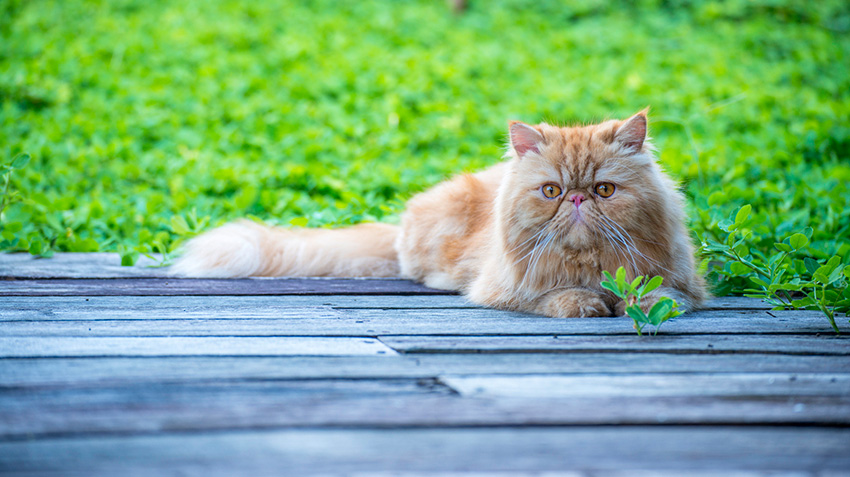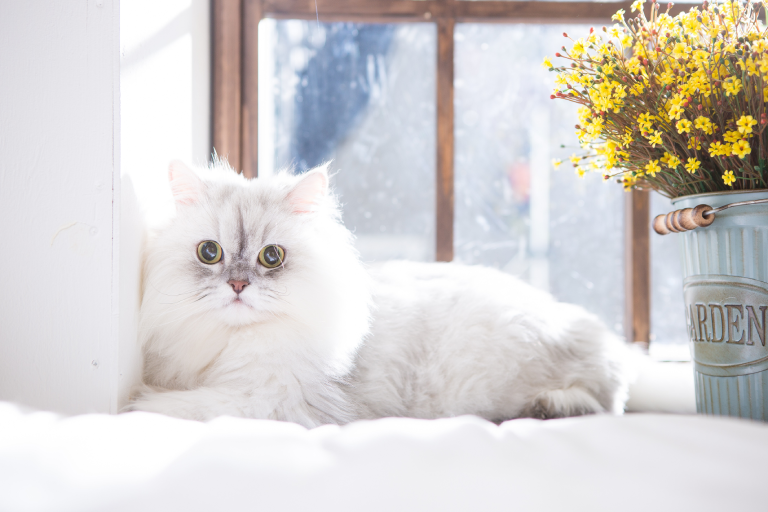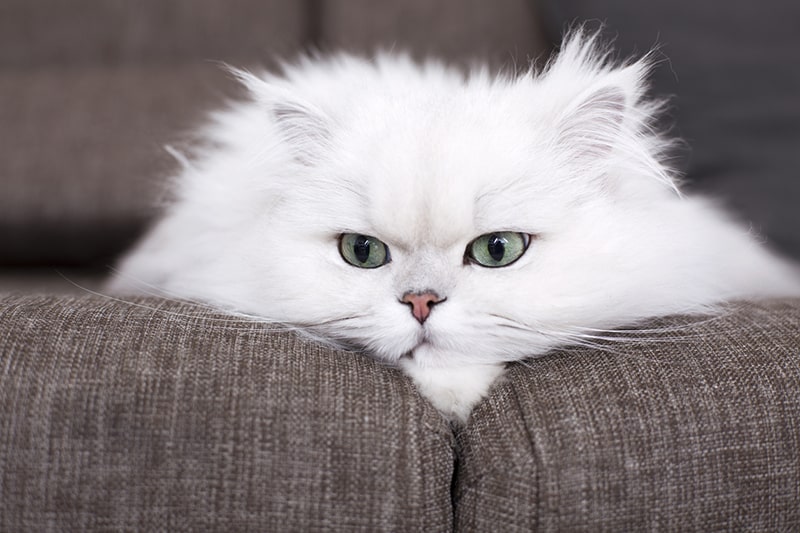Are you a Persian cat lover? Looking for the perfect living environment for your furry friend? Well, you’ve come to the right place! In this article, we’re going to dive deep into the ideal living environment for Persian cats, giving you all the important details you need to create a cozy and comfortable space for your precious pet. But wait, there’s more! If you’re interested in learning even more about Persian cats, stay tuned until the end, where we’ll provide you with 10 common questions and answers about these beautiful feline creatures.
Now, let’s talk about the ideal living environment for Persian cats. These majestic and sophisticated creatures require a space that caters to their specific needs. Firstly, Persian cats are known for their long and luxurious coats, so it’s crucial to provide them with a clean and clutter-free area that minimizes the chances of their fur getting tangled or matted. Regular grooming is also a must to maintain their stunning appearance.
Another important factor to consider is the level of activity and stimulation. Persian cats tend to be more laid-back and less active compared to other breeds, so it’s essential to provide them with a space that offers plenty of cozy spots for lounging and relaxing. Consider placing soft, comfortable beds or blankets in different areas of your home where your Persian cat can curl up and unwind. Additionally, providing them with scratching posts and interactive toys can keep them entertained and mentally stimulated.
In our next article, we’ll delve into even more details about the ideal living environment for Persian cats, including the best types of litter boxes, the importance of proper ventilation, and the significance of a peaceful and quiet space. Stay tuned for more valuable information that will help you create the perfect home for your beloved Persian cat!
The Ideal Living Environment for Persian Cats

Introduction
Persian cats are known for their luxurious coats, beautiful features, and calm demeanor. They can make wonderful companions for cat lovers who have the right understanding of their needs. In order to provide the best possible care for Persian cats, it is important to create an ideal living environment that meets their specific requirements. This article will discuss the origins of Persian cats, their physical appearance, personality traits, preferred living environment, feeding and nutrition, grooming needs, exercise and play, health and wellness, socialization and bonding, training and behavioral tips, traveling with Persian cats, and bringing home a Persian kitten.
The Origins of Persian Cats
Ancient History
Persian cats have a rich and fascinating history that dates back to ancient times. It is believed that they originated in Persia (modern-day Iran) and were highly regarded as treasured companions. Their popularity spread throughout the world, and they eventually became one of the most beloved cat breeds.
Breed Development
Over the centuries, Persian cats underwent selective breeding to enhance their distinctive characteristics. Breeders focused on developing their long, flowing coats, well-rounded bodies, and sweet facial features. This careful breeding resulted in the Persian cats that we know and love today.
Notable Characteristics
Persian cats are known for their unique physical attributes. They have long and silky coats that require regular grooming to maintain their beauty. Their bodies are compact and muscular, with a broad chest and short legs. Persian cats also have round faces with big, expressive eyes and small, rounded ears.

Physical Appearance
Coat
The Persian cat’s coat is its most distinctive feature. It is long and thick, covering the entire body, and comes in a wide variety of colors and patterns. Regular brushing is necessary to prevent matting and keep the coat clean and healthy.
Body Structure
Persian cats have a sturdy and well-proportioned body. They are medium to large in size, with a broad chest and short legs. Despite their size, Persian cats are known for their graceful and elegant movements.
Facial Features
The Persian cat’s facial features are what make them truly unique. They have round faces with a pronounced muzzle, creating a sweet and cherubic appearance. Their eyes are large, round, and expressive, while their small, rounded ears add to their overall charm.
Personality Traits
Gentle and Calm
Persian cats are known for their gentle and calm temperament. They have a laid-back nature and prefer a peaceful and quiet environment. They are not as energetic or active as some other cat breeds, and they enjoy spending their time relaxing and lounging around.
Independent Nature
While Persian cats are independent creatures, they also enjoy the company of their human companions. They are content to spend time alone, but they also appreciate attention and affection. Persian cats may not be as demanding as some other breeds, but they still require love and companionship.
Affectionate and Loving
Despite their calm demeanor, Persian cats are also very affectionate and loving. They form strong bonds with their owners and enjoy being petted and cuddled. Persian cats are known for their sweet and gentle nature, making them ideal pets for families and individuals looking for a loving companion.

Preferred Living Environment
Indoor Living
Persian cats are best suited for indoor living. They are not well equipped to handle the outdoors and are at risk of being injured or exposed to diseases. Creating a safe and comfortable indoor environment is essential for their health and well-being.
Peace and Quiet
Persian cats thrive in a peaceful and quiet living environment. They are sensitive to loud noises and disruptions, so it’s important to provide them with a calm and serene atmosphere. This can be achieved by minimizing noise levels and creating a tranquil space for them to relax.
Temperature and Humidity
Persian cats are sensitive to extreme temperatures and humidity. They prefer a moderate climate with comfortable room temperatures. It’s important to keep their living area at a consistent temperature and avoid exposing them to excessive heat or cold.
Feeding and Nutrition
Quality Cat Food
Providing a balanced and nutritious diet is vital for the health and well-being of Persian cats. High-quality cat food that is specifically formulated for their needs should be the foundation of their diet. It is important to choose a brand that contains the right balance of protein, fats, and carbohydrates.
Water Requirements
Persian cats should have access to fresh and clean water at all times. It’s important to provide them with a clean water bowl and ensure that it is refilled regularly. Some cats prefer running water, so using a pet fountain or providing a dripping water source may encourage them to drink more.
Special Dietary Considerations
Persian cats are prone to certain health issues that can be managed through proper nutrition. Some cats may benefit from a diet that is low in calories to prevent obesity, while others may require a specific diet to address issues such as urinary tract health. Consulting with a veterinarian can help determine the best dietary plan for your Persian cat.

Grooming
Daily Brushing
Persian cats have long and thick coats that require daily brushing to prevent matting and tangling. Using a wide-toothed comb or a brush specifically designed for long-haired cats will help keep their coat smooth and tangle-free. Regular brushing also helps to reduce shedding and minimize hairballs.
Bathing
Bathing a Persian cat may be necessary from time to time, especially if their coat becomes dirty or greasy. It’s important to use a gentle cat shampoo and to thoroughly rinse out the product to avoid skin irritation. Bathing should be done with care and attention to prevent any unnecessary stress or discomfort.
Coat Care Tips
In addition to regular brushing and bathing, there are several other coat care tips that can help keep a Persian cat’s coat healthy and beautiful. Trimming the hair around the eyes and bottom to prevent matting, using a detangler spray to make brushing easier, and providing regular grooming sessions can all contribute to maintaining a well-groomed Persian cat.
Exercise and Play
Physical Activity Needs
While Persian cats are not as active as some other breeds, they still require regular exercise to maintain a healthy weight and promote overall well-being. Interactive play sessions, such as using wand toys or laser pointers, can provide mental stimulation and keep them entertained. It’s important to provide opportunities for physical activity, but also to respect their limits and not push them beyond what they are comfortable with.
Interactive Toys
Providing a variety of interactive toys can help keep Persian cats engaged and entertained. Toys that encourage chasing, pouncing, and batting can mimic natural hunting behaviors and provide mental stimulation. Puzzle toys and treat-dispensing toys can also be used to challenge their problem-solving skills and keep them mentally sharp.
Playtime Tips
When engaging in playtime with a Persian cat, it’s important to be gentle and patient. They prefer a calm and relaxed play style, so avoid any rough or aggressive movements. It’s also important to provide a safe and secure play area, free from any potential hazards or dangers.
:strip_icc()/GettyImages-181861505-4e63227ed0a14dc9bfe86848ef54caf3.jpg)
Health and Wellness
Common Health Issues
Like any other breed, Persian cats are prone to certain health issues. Some of the common health problems that Persian cats may face include respiratory problems, dental issues, eye problems (such as excessive tearing and eye infections), and polycystic kidney disease. Regular veterinary check-ups and early detection of any health problems can help ensure their well-being.
Regular Veterinary Check-ups
Routine veterinary check-ups are essential for the health and wellness of Persian cats. Regular examinations allow veterinarians to monitor their overall health, address any concerns, and provide necessary treatments or preventive care. Vaccinations, parasite control, dental cleanings, and other preventive measures are all part of maintaining their well-being.
Vaccinations and Preventive Care
Keeping up with vaccinations and preventive care is crucial for Persian cats. Vaccinations help protect them from common feline diseases, such as feline viral rhinotracheitis, calicivirus, panleukopenia, and rabies. Regular deworming and flea prevention are also important to protect against common parasites.
Socialization and Bonding
Introducing to Other Pets
If you have other pets in your household, it’s important to introduce your Persian cat slowly and gradually. This allows them to become familiar with each other’s scents and gradually adjust to their presence. Providing separate spaces and resources, such as litter boxes and feeding areas, can help prevent any conflict or territorial issues.
Bonding with Family Members
Persian cats are known for their strong bonds with their human family members. Spending quality time with them, such as petting, playing, and grooming, can help strengthen the bond and build trust. It’s important to create a loving and supportive environment where they feel safe and secure.
Play and Interaction
Engaging in play and interactive activities with your Persian cat can help foster a stronger bond. Whether it’s using a feather toy, engaging in gentle wrestling, or providing puzzle toys for mental stimulation, these activities can strengthen your connection and provide valuable bonding time.
Training and Behavioral Tips
Litter Box Training
Proper litter box training is essential for Persian cats. They are naturally clean animals and prefer a clean and well-maintained litter box. Providing a litter box that is large enough, easily accessible, and kept clean will help ensure they use it consistently.
Teaching Commands
While Persian cats may not be as trainable as some other breeds, they can still learn basic commands and behaviors. Positive reinforcement techniques, such as treats and praise, can be used to teach them simple commands, such as “sit” or “come”. Patience and consistency are key when training a Persian cat.
Addressing Behavioral Problems
Persian cats are generally well-behaved and have a calm disposition. However, they may occasionally display behavioral issues, such as aggression or anxiety. Understanding the underlying causes and seeking guidance from a professional can help address these problems effectively and ensure the well-being of your Persian cat.
Traveling with Persian Cats
Preparing for Travel
Traveling with a Persian cat requires careful planning and preparation. It’s important to have a suitable carrier that provides security and comfort. Familiarizing your cat with the carrier and ensuring they have their identification tags and necessary paperwork, such as vaccination records, are all important steps in preparing for travel.
Car and Airplane Travel
Whether traveling by car or airplane, there are specific considerations to keep in mind when traveling with a Persian cat. Ensuring a comfortable and secure environment, regulating the temperature, and providing necessary breaks and rest periods are all important for their well-being. It’s also important to consult with your veterinarian before traveling to address any specific concerns.
Tips for Stress-free Journeys
Traveling can be stressful for Persian cats, so it’s important to take steps to minimize their anxiety. Using pheromone sprays or diffusers, providing familiar bedding or toys, and maintaining a calm and reassuring demeanor can all help alleviate their stress. It’s also important to allow them time to acclimate to their new surroundings upon arrival.
Bringing Home a Persian Kitten
Kitten-proofing Your Home
Before bringing home a Persian kitten, it’s important to create a safe and kitten-proofed environment. This includes removing any potential hazards or toxic substances, securing electrical cords, and providing appropriate scratching posts and toys. Making your home a safe and welcoming space is essential for their well-being.
Creating a Safe Space
Upon arrival, it’s important to provide a designated safe space for your Persian kitten. This can be a small room or area that contains all their necessary resources, such as a litter box, food, water, and bedding. This space allows them to adjust gradually to their new surroundings and provides a sense of security.
Introducing to the Family
Introducing your Persian kitten to the rest of the family, including other pets, should be done gradually and carefully. Allowing them to become familiar with each other’s scents and providing supervised interactions can help promote positive relationships. Patience and supervision are key during this process.
Conclusion
Creating the ideal living environment for Persian cats involves understanding their unique needs and providing the necessary physical and emotional care. From their origins and physical appearance to their personality traits and preferred living environment, this article has covered various aspects of Persian cat care. By following these guidelines and providing a loving and supportive environment, you can ensure that your Persian cat lives a happy and fulfilling life as your beloved companion.
10 Frequently Asked Questions about Persian Cats:
-
Are Persian cats hypoallergenic?
- Persian cats are not considered hypoallergenic, as they still produce allergenic proteins. However, some people with allergies may find that they have fewer symptoms with Persian cats compared to other breeds.
-
How often do Persian cats need to be groomed?
- Persian cats require daily grooming to prevent their long coats from becoming tangled or matted. Regular brushing and occasional bathing are key to maintaining their coat’s health.
-
Do Persian cats get along well with children and other pets?
- Persian cats generally have a calm and gentle nature, making them suitable companions for children. However, it’s important to supervise interactions to prevent any accidental harm. They can also get along well with other pets if introduced properly.
-
Are Persian cats indoor or outdoor cats?
- Persian cats are best suited for indoor living. Their long coats make them vulnerable to weather conditions, and they may be at risk of injury or exposure to diseases if allowed to roam outdoors unsupervised.
-
How can I prevent my Persian cat from developing dental problems?
- Regular dental care is important for Persian cats. Providing dental-friendly treats, using toothpaste or dental wipes designed for cats, and scheduling regular dental check-ups with a veterinarian can all help prevent dental issues.
-
How much exercise do Persian cats need?
- Persian cats are not as active as some other breeds and have lower exercise requirements. While regular play sessions are important for their overall well-being, they generally prefer a calm and relaxed lifestyle.
-
Are Persian cats prone to any specific health issues?
- Persian cats are prone to certain health issues, such as respiratory problems, dental issues, eye problems, and polycystic kidney disease. Regular veterinary check-ups and preventive care can help manage these conditions.
-
Can Persian cats be trained to use a litter box?
- Yes, Persian cats can be trained to use a litter box. Providing a clean and easily accessible litter box and gently guiding them to use it can help establish good litter box habits.
-
How long do Persian cats live?
- On average, Persian cats have a lifespan of 12 to 16 years. With proper care, diet, and regular veterinary check-ups, they can live even longer.
-
Are Persian cats good for first-time cat owners?
- Persian cats can make good pets for first-time cat owners, as they are generally calm and low-maintenance. However, their long coats require regular grooming, which should be taken into consideration.